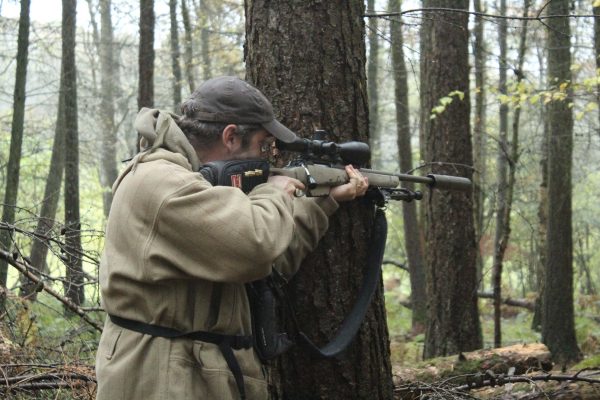Humane Animal Dispatch (HAD)

Awarding Body:
Lantra AwardsTraining course type:
Training and assessmentNovice training course duration:
1 dayNovice candidate numbers:
We limit our courses to only 12 candidates to allow for 1:1 tuition where required.Card options:
Upon completion of the course, you will receive a Lantra Awards certificate of completion. Where required, we can also assist with FAC applications and variationsMinimum age:
14Restrictions:
To gain the most from this training course, applicants should ideally have some experience in deer stalking or deer management, but this is not a necessity.Instructor:
Freelance
What is Humane Animal Dispatch (HAD)?
The Humane Animal Dispatch (HAD) course is anationally acclaimed and LANTRA approved course to cover the varying scenarios within which a HAD will need to operate.
With the increase in road traffic, more suitable habitat, and the resultant increase in deer populations nationally, there has never been more of a need for Police forces to be supported by valid, professionally trained Humane Animal dispatchers (HAD) able to work in high-pressure environments.
Who better to provide this service than those already involved in deer stalking and management?
Our trainers have developed an already nationally acclaimed and LANTRA approved course to cover the varying scenarios within which a HAD will need to operate.
Approved HAD training is crucial to deal with animals exposed to suffering because of vehicle collisions and will help improve your collaborative relationships with the UK’s Police Constabularies, but more importantly to appreciate the benefits, suitability, and disadvantages of using various tools from Rifles to Pistols, shotguns to knives.
This course will help you to formulate a reliable working protocol, to properly risk-assess the situation and ultimately to deliver a highly professional service in what can be a stressful environment for all concerned.
What does the training course include?
- Deer Vehicle Collisions – Covering exactly what a DVC is, what you might be expected to deal with, and the various scenarios that make the role of Humane Animal Dispatcher (HAD) unpredictable, and how they may approach each scenario.
- The Effects of Seasons and Time of Day – There are certain times of the year, and indeed times of the day that the HAD can expect more demand for the work to be carried out. We look at the influences that dictate a rise or fall in deer activity.
- Constabulary Involvement – studies the procedures leading to Police involvement, and what they expect from the HAD, as well as who is responsible for what.
This section would cover:- Nominated individuals
- Approved list of Humane Animal Dispatch operatives c. Experience, qualifications and training
- Firearms/dispatching instruments
- Availability
- Insurance
- Reliability
- Motivation
- Dealing with an Incident – Setting out an operation plan that would ensure that HAD’s work safelyin the interests of public safety and animal welfare.
- HAD Procedure at a DVC Incident – The actual working processes are discussed and examined leading to HADO’s complete understanding of how to deal with the humane destruction of the animal, whilst ensuring that negative public perception is minimised or eliminated.
- Equipment List – Covers the equipment that the HAD must, should and could carry with him/her to ensure a safe, humane and efficient job.
- Shot Placement – This will depend on the weapon/instrument used. We look at the pros and cons of weapons that should be used, or could be used, examining the physiology of projectile behaviour, possible animal responses, and the resultant wound channels created by a variety of weapons/instruments.
- Carcass Disposal – The law is quite specific on the disposal of dead animals. We look at the acceptable methods of covering this aspect, including individual responsibilities.
- Legislation Applicable to DVC’s – We look at the HAD’s responsibilities in law regarding animal dispatch and the associated firearms legislation/licensing and conditions attached.
- Maintaining Records – Maintenance of records is important for research, statistical analysis, and for personal accountability. We look at the records that the HAD must, should and could keep covering any future fallout or eventuality.
- Practical Demonstrations – We show the effects of various weapons/instruments used in Humane Animal Dispatch and show both their short to medium range effects.
